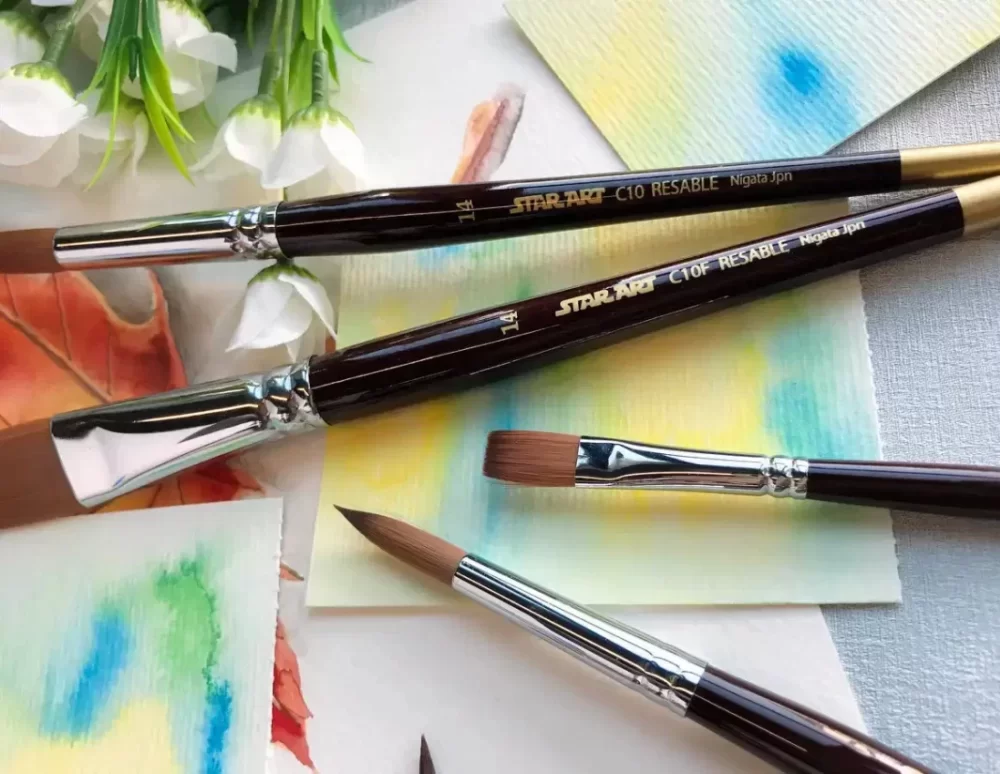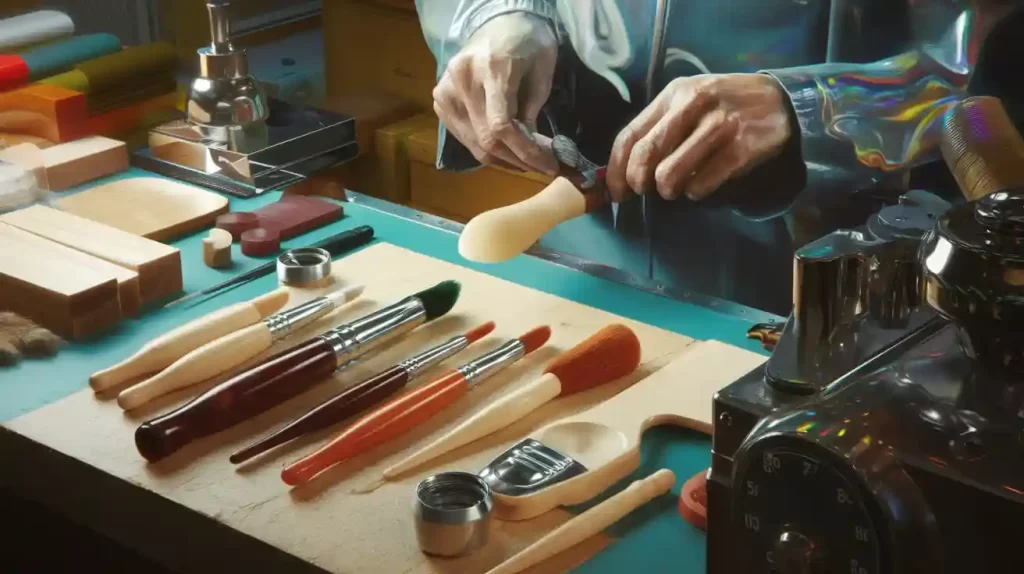Art brushes and painting tools
There are a variety of paintbrushes available, but they all have the same basic components – a handle, a ferrule, and bristles. The handle is the part that holds the brush and is usually made of wood or plastic. Long-handled brushes are best for large-scale paintings and easel work, while short-handled brushes are good for close-up, detailed work. The bristles are the hair-like tips that hold the paint. The bristles can be made of natural or synthetic fibers. The ferrule is the metal clip that connects the handle to the brush and holds the bristles in place. All paintbrushes have the same basic parts, but they are useful for different painting mediums and techniques, depending on the fiber and shape of the bristles.

Brushes by painting medium
- Acrylic paint brushes: Acrylic paint brushes are designed to handle the consistency of acrylic paint, which is thicker than watercolor paint, but not as thick as oil paint. Synthetic acrylic paint brushes are the most popular fiber types and are made of nylon or polyester fibers, which provide more flexible and resilient bristle fibers. Natural acrylic paint brushes can also be used, but their bristles are stiffer than synthetic fibers. Bristle brushes leave visible brush strokes and add texture to your painting. Finally, acrylic paint brushes usually have longer handles for easel painting.
- Oil brushes: These brushes have thicker bristles and are designed to handle thick, heavy oil paints. Brushes can be made of natural bristles (such as pig bristles or mink blends) or synthetic fibers, which work equally well. Oil brushes usually have longer handles because they are used on easels. We do not recommend using natural oil brushes with acrylic paints, as acrylic paint often comes in contact with water, which can damage the natural bristles.
The shape of the brush
- Round: Round or pointed bristles available in a variety of sizes. Great for fine lines, detailing, and oil control. Works well with a variety of media including acrylics, oils, and watercolors.
- Flat: Flat ferrule, square tip, medium-long bristles. Great for bold, flowing brushstrokes. Works well with all medium body sizes.
- Highlights: Square bristles, shorter and denser than flat brushes. Great for short, controlled brushstrokes. Best for thick and impasto techniques.
- Angled or Beveled: Angled tips are great for easel painting. Great for fine lines, precise edges, and curves. Works well with acrylics and oils.
- Hazelnut: Flat oval bristles, fuller than flat brushes. Great for soft, rounded edges and smudging. Works well with acrylics and oils.
- Fan: Fan-shaped bristles. Great for smudging and creating natural textures in landscapes. Works well with acrylics and oils.
- Washi Brush: These come in a variety of shapes, including flat washi brushes, mop brushes, and oval washi brushes. They are used to wet large areas of paper with water or paint. Some shapes can also be used to draw interesting shapes.


Care and maintenance
- To extend the life of your paintbrushes, always clean them with a suitable solvent immediately after use. There are different types of paintbrush cleaners to choose from, depending on the medium you use. Water is ideal for cleaning water-based paints, while specialized cleaners are better for removing oil-based paints or acrylic paints.
- You can also use paintbrush cleaners and pen holders to easily clean your paintbrushes. Reshape the bristles while your paintbrushes are wet, then hang them vertically or horizontally to dry. After cleaning, you can use paintbrush stands and storage boxes to store and protect them.

